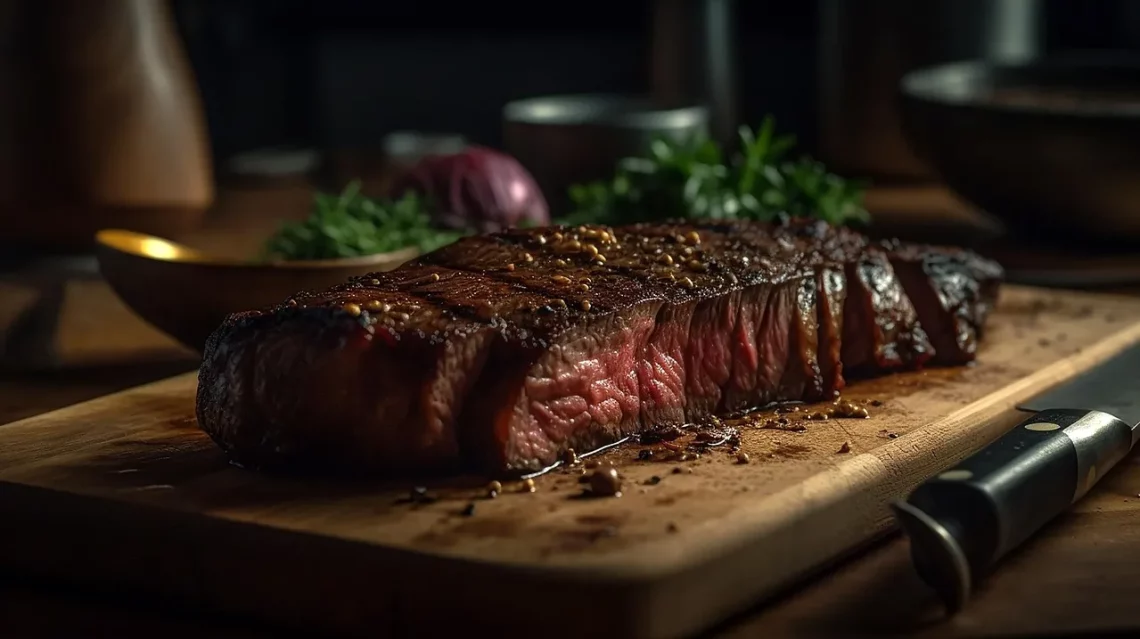
Flank Steak Nutritional Info: Benefits and Cooking Tips
Flank steak, a cut of beef that hails from the abdominal muscles of the cow, is renowned for its rich flavor and versatility in various culinary applications. This cut has gained popularity among home cooks and professional chefs alike, thanks to its affordability and unique texture. With a robust flavor profile, flank steak is ideal for marinating, grilling, or sautéing, making it a favorite for a variety of dishes, from tacos to stir-fries.
What sets flank steak apart is not only its taste but also its nutritional value. Packed with protein and essential nutrients, it serves as a great option for those looking to maintain a balanced diet. Understanding the nutritional benefits of flank steak can help individuals make informed choices about their meals, especially for those seeking healthier alternatives in their diets. As a lean cut of meat, flank steak provides a satisfying meal without excessive calories, fitting well into various dietary preferences.
In addition to its nutritional benefits, knowing how to cook flank steak properly can elevate your dining experience. The right cooking technique can turn this affordable cut into a gourmet meal. Whether you prefer it grilled, broiled, or pan-seared, mastering the art of cooking flank steak will not only impress your family and friends but also enhance the overall flavor and tenderness of the meat.
Nutritional Profile of Flank Steak
Flank steak is a nutrient-dense cut of beef, making it an excellent choice for those who prioritize health without compromising on taste. A typical serving of flank steak (about 3 ounces, cooked) contains approximately 23 grams of protein, which is essential for muscle repair and growth. Protein plays a vital role in various bodily functions, including hormone production and immune system support.
In addition to protein, flank steak is relatively low in fat compared to other cuts of beef. A serving usually contains about 9 grams of fat, with only about 3 grams being saturated fat. This makes flank steak a better choice for those watching their fat intake, as it helps maintain heart health while still providing the flavors of red meat.
Flank steak is also a good source of several essential vitamins and minerals. For instance, it contains significant amounts of iron, which is crucial for oxygen transport in the blood and energy metabolism. The presence of zinc in flank steak supports immune function and overall cellular health. Additionally, B vitamins such as B12, niacin, and riboflavin found in flank steak contribute to energy production and neurological function.
Despite its nutritional benefits, it’s essential to consume flank steak in moderation and as part of a balanced diet. Incorporating various vegetables and complex carbohydrates can round out a meal, ensuring that you receive a wide range of nutrients. This approach not only enhances the health benefits of the meal but also creates a colorful and appetizing plate.
Health Benefits of Flank Steak
Incorporating flank steak into your diet can provide numerous health benefits that contribute to overall well-being. One of the primary advantages of consuming this cut of beef is its high protein content, which is vital for maintaining muscle mass and promoting recovery after exercise. This attribute makes flank steak an excellent option for athletes and active individuals who need to replenish their protein levels.
Moreover, the presence of essential amino acids in flank steak aids in muscle repair, making it a favored choice for post-workout meals. The iron content in flank steak also plays a critical role in energy levels; it helps combat fatigue caused by iron deficiency, particularly in individuals who may not consume enough iron-rich foods.
Another significant health benefit of flank steak is its contribution to satiety. The protein and fat content in this cut can help keep you feeling full for longer periods, which can be beneficial for weight management. By reducing the urge to snack between meals, flank steak can play a role in supporting weight loss or maintenance goals when consumed as part of a balanced diet.
However, it’s essential to pay attention to portion sizes and cooking methods to maximize the health benefits. For instance, grilling or broiling flank steak rather than frying can help retain its nutritional value while minimizing added fats. Pairing flank steak with a variety of colorful vegetables not only enhances the meal’s flavor but also boosts its overall nutrient profile.
Cooking Techniques for Perfect Flank Steak
Cooking flank steak to perfection requires some knowledge of techniques that can enhance its flavor and tenderness. One of the most crucial steps is marinating the meat before cooking. Flank steak, with its lean texture, benefits greatly from marinades that contain acidic components like vinegar or citrus juice. These acids help break down the muscle fibers, resulting in a more tender bite.
A marinating time of at least 30 minutes to several hours is recommended. Popular marinade ingredients include garlic, soy sauce, olive oil, and various herbs and spices. The longer you marinate the meat, the more pronounced the flavors will be.
When it comes to cooking, grilling is a favorite method for flank steak. Preheating your grill to high heat ensures that the exterior sears quickly, locking in the juices. Aim for a cooking time of about 4 to 6 minutes per side for medium-rare doneness. Using a meat thermometer can aid in achieving the desired internal temperature of around 130-135°F.
After cooking, it’s essential to let the flank steak rest for about 5 to 10 minutes before slicing. This resting period allows the juices to redistribute throughout the meat, preventing them from spilling out when you cut into it. When slicing flank steak, always cut against the grain to enhance tenderness.
While grilling is popular, flank steak can also be cooked using other methods such as broiling or pan-searing. Each technique can bring out different flavors and textures, making it a versatile cut for various culinary creations. The key is to monitor the cooking time closely to avoid overcooking, which can lead to a tougher texture.
In conclusion, flank steak is a flavorful and nutritious option that can fit into a variety of diets and cooking styles. Understanding its health benefits, nutritional profile, and cooking techniques can help you make the most out of this delicious cut of meat.
**Disclaimer:** This article is for informational purposes only and should not be considered medical advice. Always consult a healthcare professional for medical concerns or dietary changes.




